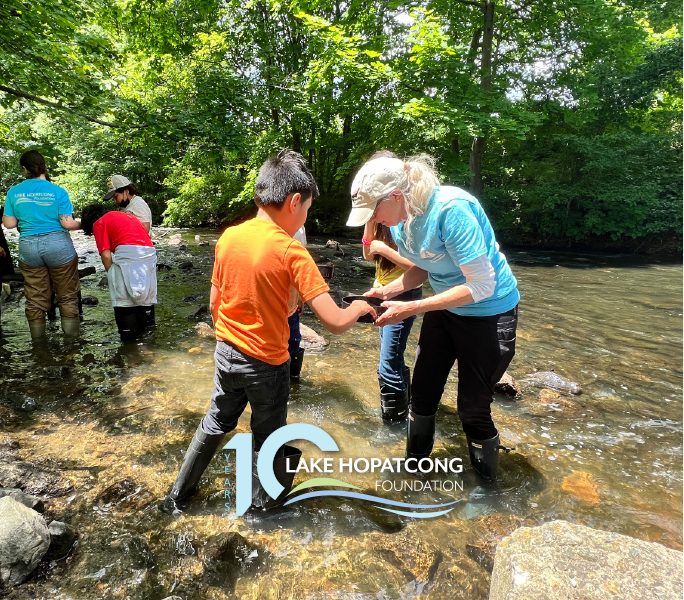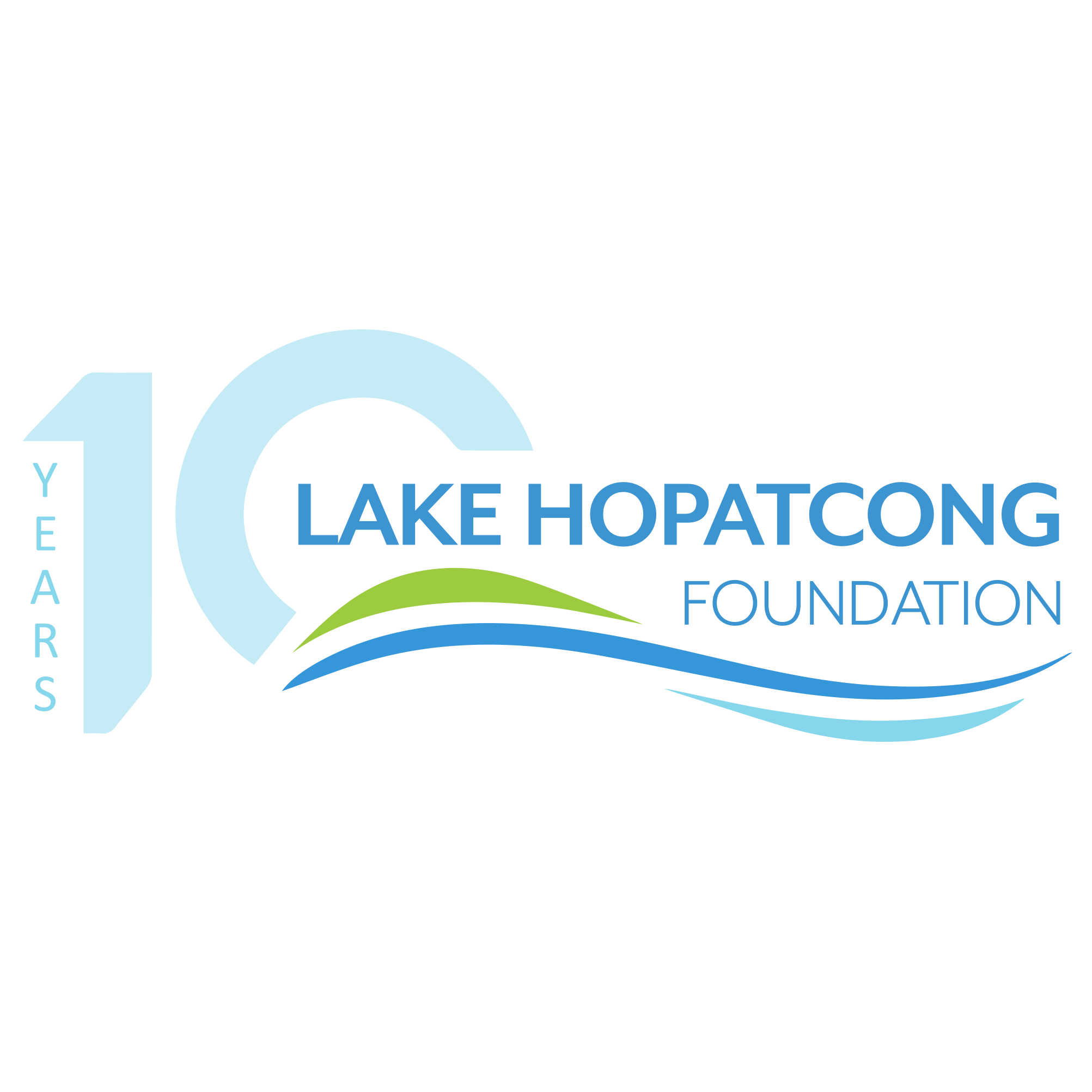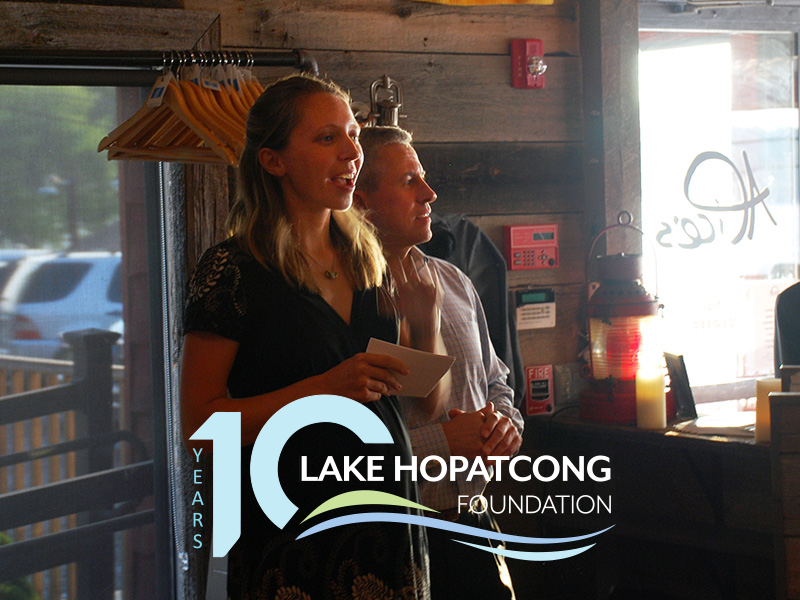
July 28, 2022| Education, Environment, People
By: Amy Bush
This post is part of a series of articles celebrating the Lake Hopatcong Foundation's 10th anniversary and a decade of protecting our lake, together. Amy Bush, Lake Hopatcong Foundation (LHF) volunteer, educator, and Education Team member, shares her account of the evolution of our educational field trip program.
Have you ever wondered about what the first day of your retirement would be like?
My first day of retirement was an interesting one, thanks to the marvelous Marty Kane! He was so excited about the LHF Education Team that was being organized, and of course, I had to be on it since I was now retired, less than 24 hours. That, my friends, was in June 2014 at the Lake Hopatcong Antique Boat Show. By the spring of 2015, nearly 250 4th-graders were joining us at Hopatcong State Park for our inaugural year of field trips.
Looking back at my first yellow legal pad full of LHF Education Team meeting notes, I am awed by the group that was assembled and how much has been accomplished. Jessica Murphy was the executive director of the Foundation and with Donna Macalle-Holly, Marty Kane, and others, became the driving force of an amazing team of people who have given countless hours to develop and implement an environmental field trip program that has educated thousands of children on water ecology and the importance of our water resources.
In 2019, the field trip program was recognized by the Alliance for New Jersey Environmental Education (ANJEE) with their first-ever Pat Skelly Community Award which honors volunteer-led efforts in environmental education in local communities.
When the pandemic hit in 2020, schools were forced to cancel their field trips. In response, the Education Team decided the field trips would have to go virtual. That was a challenge, but with many ZOOM meetings and determination to get it done, we persevered, and virtual programming was provided to schools in 2020 and 2021. Both years the foundation received excellent feedback.
This year we were all very happy to get back to in-person field trips. The program consists of four stations developed to accomplish goals such as, promoting a positive experience around Lake Hopatcong and providing students with a sense of wonder for the lake and the natural world. In addition, we aim to provide experiences at Lake Hopatcong that allow students to understand the relationship between human actions and their impact upon the natural world in order to cultivate environmentally responsible behaviors and positive changes.
The stations include a discovery hike, a lesson on non-point source pollution using an interactive EnviroScape watershed model, water quality sampling on Study Hull, the LHF Floating Classroom, and my personal favorite, collecting and sorting macroinvertebrates in the Musconetcong River. In this beautiful, open, outdoor classroom the students are actively engaged in hands-on activities reinforcing and building on concepts that they have learned in their inside classrooms.
We are continually inspired and motivated by students, teachers, paraprofessionals, parents, volunteers, our interns, watershed ambassadors, and each other. At the start of the program, students were invited from towns around Lake Hopatcong. For some of these students, it was the first time that they had been to the lake. Some that came to the program as fourth-graders are now in the Morris County Environmental Science Academy. With every student that goes through the educational field trip program, there is an opportunity to spark an interest in wanting to know more about what they have experienced at the park.
It is so much fun to be involved in this program. It’s always an adventure to work with the river team. Listening to students as they are working together in the river and on land at the tables using the scopes and tablets to take a closer look at what they have collected. Observing them as they ask and answer questions with staff and peers in discussions that lead to identifying what they have found, and how it informs us about water quality. Students leave with new knowledge and skills that have the potential to motivate and inspire them to learn more.
For example, The Macroinvertebrate Shuffle is a skill learned, because macros are not only an indicator species, telling us the water quality of the river, they are also benthic organisms because they live on the bottom of the river. We put on boots and wade in the river, working together to collect, identify, and sort macros into their different classes or groups.
The favorite macro to catch creating a sense of triumph followed by great celebration is the Crayfish. This year 2 teeny tiny transparent Crayfish were collected on the same day that a large Crayfish was collected, sending screams and cheers throughout the crowd! One student was heard saying, “You mean this, turns into that?” So awesome! Another student leaving the river said, “This was so gross, and so fun.” Just warms my heart!
Some students are so interested in what they are doing, they don’t want to stop using the equipment, looking at a tablet screen connected to a scope they can move over the macro they just identified, giving up a sieve, or having to take off their boots! Just priceless, and makes my day, every day at the river. This is just a small snapshot of a few concepts in one activity within the field trip program.
If you want to learn more about macroinvertebrates or any part of the field trip program, I encourage you to volunteer next spring. It’s a great way to spend retirement. Thanks, Marty!

January 21, 2022
Advocacy, Arts & Culture, Community, Education, Environment, Events, Fundraising, LHF Environmental & Cultural Center, People, Recreation, Safety

March 23, 2022
Community, Education, Environment, Events, People, Recreation, Safety